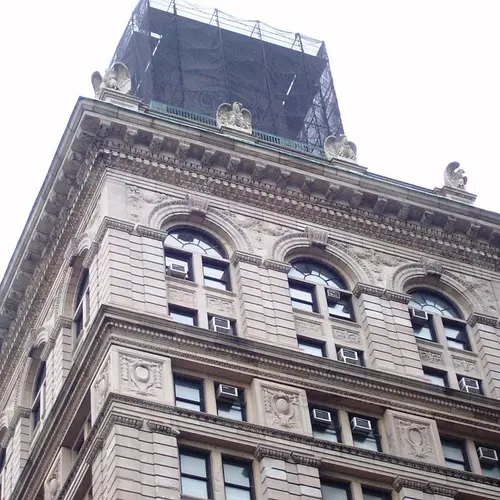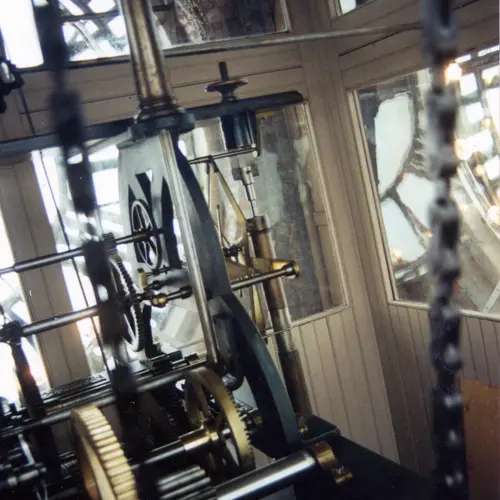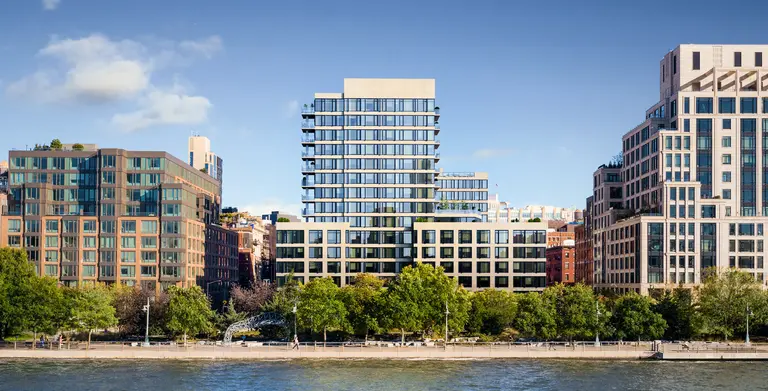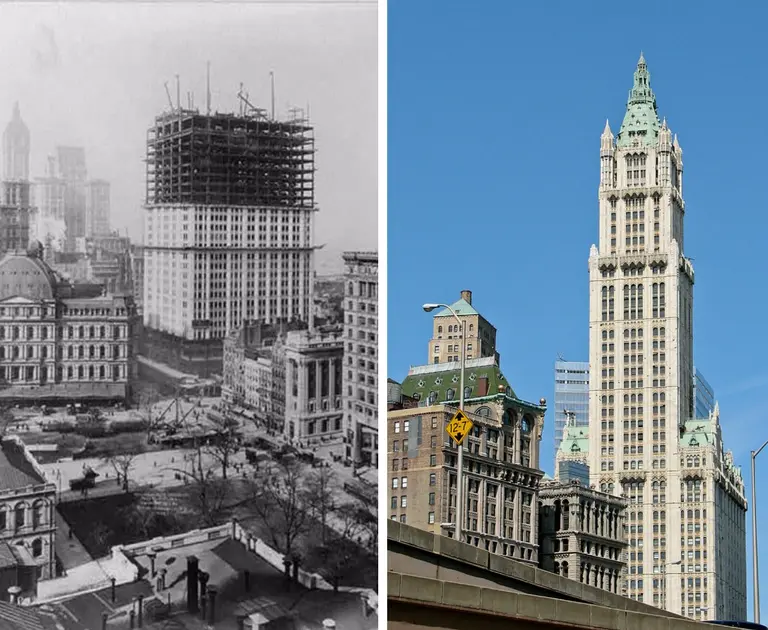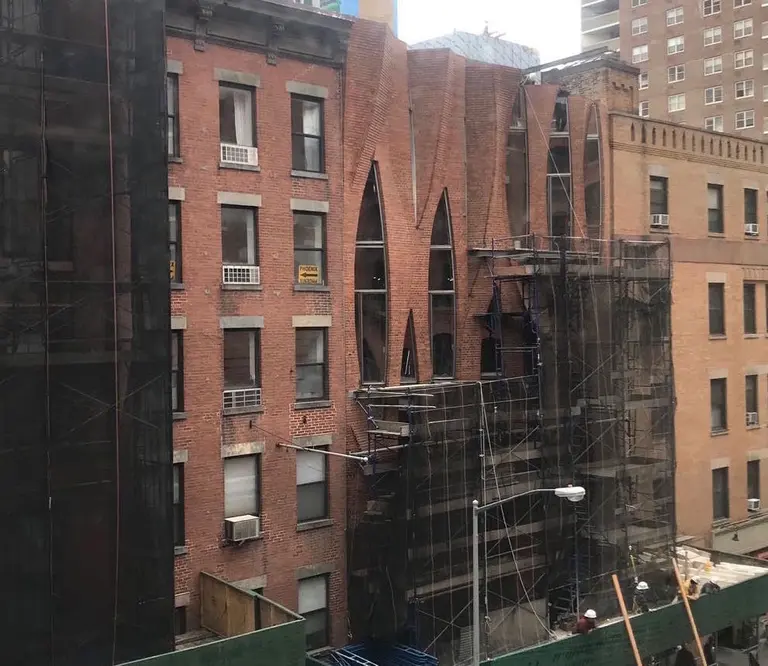Developer can close historic Tribeca clock tower to the public to make way for penthouse, court rules
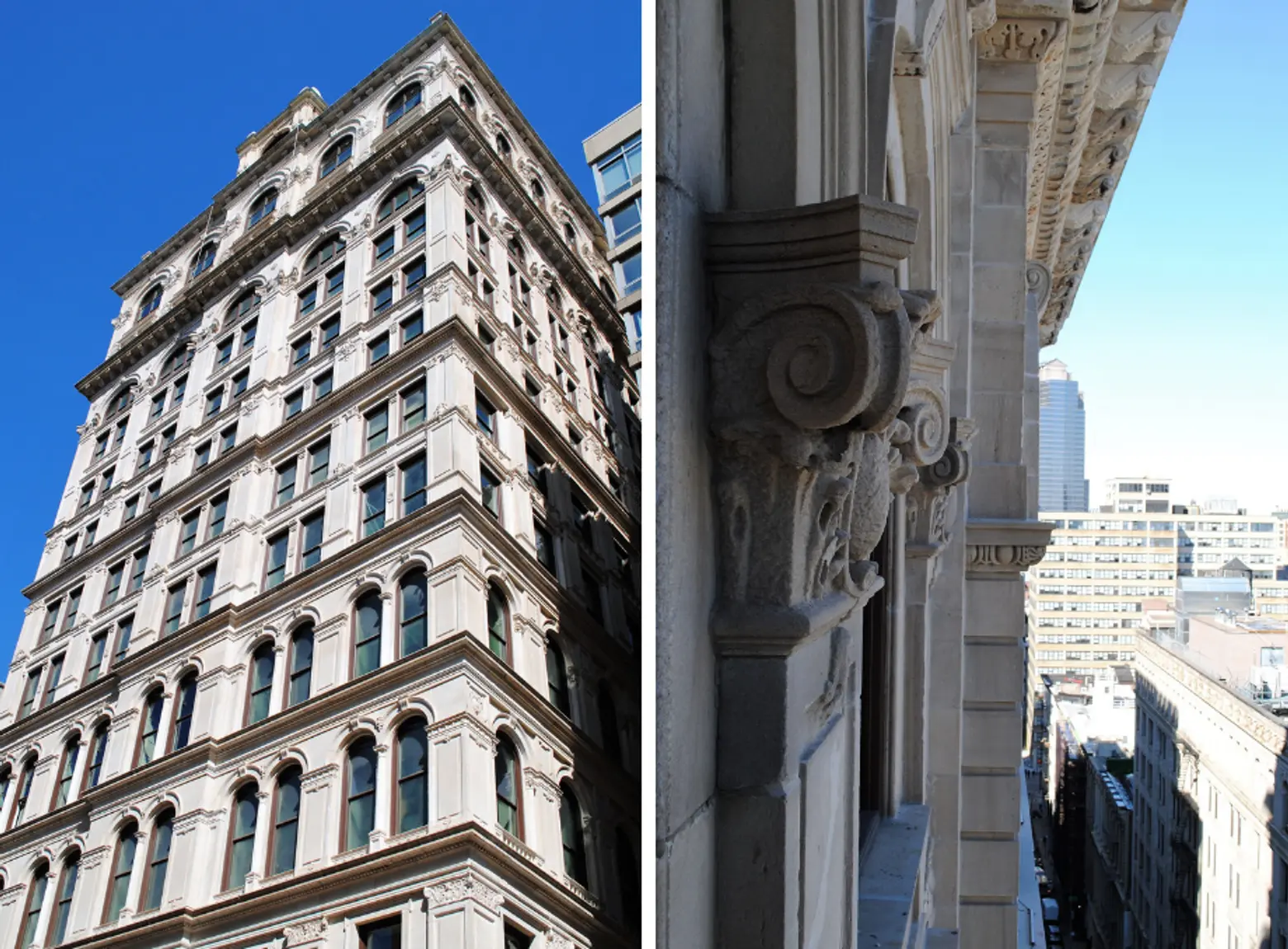
Images of the 108 Leonard’s newly restored facade courtesy of Hundred Stories PR
Update 4/1/19: The New York State Court of Appeals on Thursday ruled against a group of preservationists who sued to stop developers from turning a historic clock tower into a penthouse. According to the judge, the LPC does not have the authority to give access to the building and the agency’s plan to make the 19th-century clock run electronically is reasonable.
Developers had big plans for the luxury condominiums they were creating at the block-long former site of the New York Life Insurance Company at 346 Broadway (also known as 108 Leonard Street) since purchasing it from the city in 2014. The new residential project would hold 140 units starting at $1.5 million, capped by a stunning penthouse that would be priced at over $20 million. The one snag in this golden opportunity: The building’s iconic Clock Tower–sometimes called New York’s ‘Big Ben,’ which sits atop the building and was designated an interior landmark in 1987. The clock must be wound by hand, a process which requires access through, as the New York Times reports, the future penthouse. A case against the developers’ plan and a subsequent appeal were both won by the opponents, saying the LPC couldn’t unwind the clock’s landmark status–but an appeal in the state’s highest court, the Court of Appeals, is still pending.

Photo courtesy of Save America’s Clocks
The historic clock in its current state–it has stopped working since the debate began–must be set by hand every week using heavyweights. The only access to the clock would be through the luxurious home which would boast several levels, five bedrooms with Brooklyn Bridge views and possibly a pool and spa. The developers persuaded the city’s Landmarks Preservation Commission, who had made the rare interior landmark designation, to end public access to the clock tower.
According to Michael Hiller, the zoning and land-use attorney representing the opposition, by law, interior landmarks have to be accessible to the public, as the Clock Tower had been for tours and as an art gallery. The developers’ plan to sell the clock tower as one of the condo conversions would make it inaccessible to the public, thereby invalidating its designation.
The opposition includes preservationists–a nonprofit group called Save America’s Clocks leads the plaintiffs in the case–and community groups. Hiller’s high-profile cases have often been against the Landmarks Preservation Commission, including new construction along historic Gansevoort Street as well as the iconic clock tower building.
The clock would not be destroyed in the developer’s penthouse plan. When the developers approached the LPC originally, they said that they planned to electrify the clock mechanism without moving it; but some worry that electrification would ruin it.
The case has come to represent the billion-dollar juggernaut of luxury real estate turning New York City into a fortress for the wealthy, leaving the city’s diverse and interesting streetscapes and neighborhoods–and their non-one-percent residents–unable to thrive. In light of this sentiment, say opponents, landmarks should be forever.
It’s a feeling shared by Marvin Schneider, the city’s official clock master, who turned the historic clock’s gears by hand for 40 years. “It’s a testament to American pre-eminence in the clock field in the late 19th century, that a clock like that could be made on that scale to function well enough in this age. You could still set your watch by it.”
Update 4/1/19: Appellate Judge Michael Garcia in his ruling said the Landmarks Preservation Commission acted appropriately when approving plans by the group to convert the former New York Life Insurance Company building into residences, amNY reported. Tom Bernardin, the founder of Save America’s Clocks, called the ruling a “sign of the times,” in a statement to 6sqft. “Money seems to outweigh all concerns. How very American to disregard our cultural patrimony so that a penthouse can have one more room,” Bernardin said. “I don’t think this would have been the outcome forty years ago when preservation was held in higher regard.”
[Via NYT]
RELATED:
- INTERVIEW: Zoning and land-use attorney Michael Hiller fights to uphold the Landmarks Law
- Take a virtual tour of the Waldorf Astoria’s freshly landmarked interiors
- Senators request interior landmark status for two NYPL reading rooms
- Dumbo Clock Tower penthouse finally sells for $15M, is borough’s priciest condo ever sold
